2015.01.26 19:15
Aaron Betsky To Lead Taliesin West
"In the Zeitgeist, everything will be the future."
2015.01.27 09:56
Aaron Betsky To Lead Taliesin West
I'm deeply obsessed with the big, fat columns of the Ralph Jester House (1938). How can you not be?!
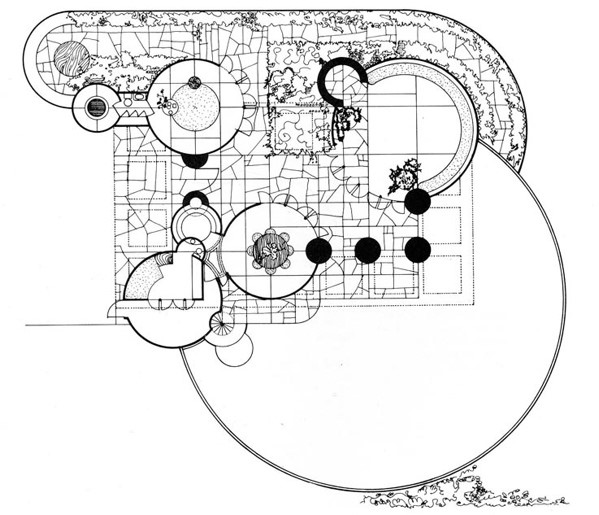
"Such a pattern of curves is wholly new in Wright's architecture and suggests all sorts of possibilities for the future."
Hitchcock, In the Nature of Materials--actually read it sometime.
2015.01.27 18:07
Quo vadis, Charleston architecture?
It seems that Charleston is now more involved with setting an agenda then it is with being sensitive to its built environment. With guidelines/restrictions comes a loss of sensitivity. It was a mistake to reject the new Clemson design because it truly exhibited a whole range of sensitivity/sensibility. Were the design actually built, I strongly suspect it would have been a real positive asset to its environment. Guidelines and restrictions, by default, engender a packaged sensitivity, which soon enough boils down to boredom, if not all out kitsch.
2015.01.28 10:53
Quo vadis, Charleston architecture?
EKE, the Clemson design itself exhibits a whole range of sensitivity/sensibility. It readily shows that the architects took great care in putting it together to achieve (an institutional) quality. A building of quality is invariably an asset to its environment, more so than a building whose first (and perhaps only) priority is to "fit in."
In a traditional setting it is indeed traditional for an institution to stand out. Charleston should embody a mature sensitivity rather than come to rely on some kind of stage-set notions of "character."
| |
2015.01.30 13:33
Quo vadis, Charleston architecture?
Looks to me like the area of Charleston around 292 Meeting Street indeed has a tradition of "anyone... allowed to build anything that suits them anywhere they want."
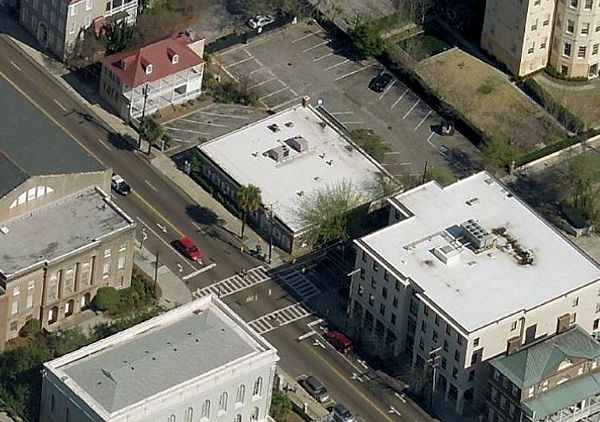 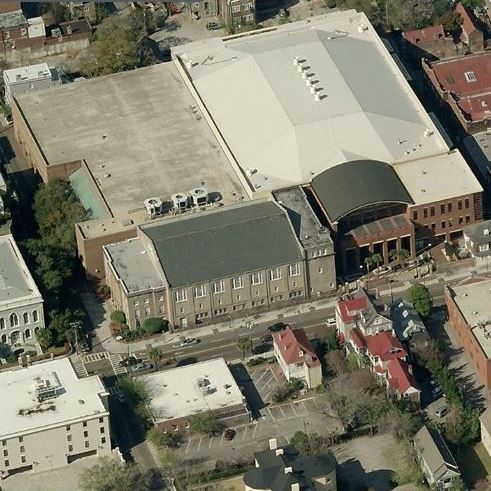 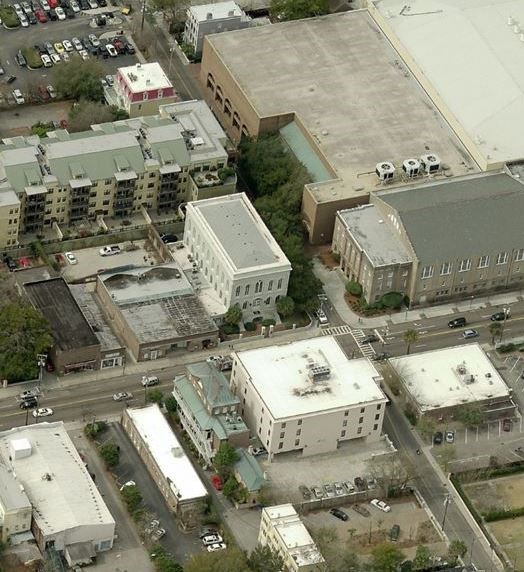
And if you take the time to look closely at the Clemson design you'd see that the architects indeed learned from and in turn were sensitive to the context.
| |
2015.01.30 14:17
Quo vadis, Charleston architecture?
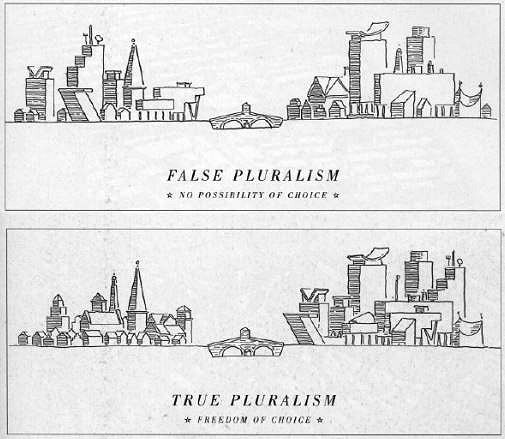
Then judging by the Krier diagram, Charleston itself (at least the area around 292 Meeting Street) is an example of "False Pluralism." It seems to me that so-called 'False Plurism' is the reality of the world for the last 200 years or so, and that so-called 'True Pluralism' is just a(n idealized) myth.
2015.03.08 11:26
The Battle of the Ancients and the Moderns (sequel #______ )
So what's the battle?
Saying that "we find modernism's inception in the 14th century, or at least sometime during the Enlightenment" is proof of what (victory) exactly?
Perhaps the birth and rise of subjectivity is the real origin of the modern. Or, put better, true modernism is the culmination, or apotheosis even, of the triumph of subjectivity over objectivity.
2015.03.08 12:23
The Battle of the Ancients and the Moderns (sequel #______ )
But the Anasazi cliff ruins had no mechanized plumbing, no electricity, no mechanized heating. Surely, what is generally known as 'modern' architecture today does not exist without advanced technology.
2015.03.08 17:03
The Battle of the Ancients and the Moderns (sequel #______ )
No, I didn't ask for examples of "modern architecture without electricity, running water, and mechanical heating systems." You offered: "there are "modern" style backcountry ski and hiking huts in Colorado and the Great Smoky Mountains that don't have plumbing or electricity and the heating is by fireplace yet they are unmistakably modern in design," to which I replied: " 'style' is the operative word of your above statement. Can you supply some pictorial examples of these ski and hiking huts? Can these huts perhaps be modern in style but not necessarily modern in design?"
My interest is in "perhaps a more appropriate way to distinguish architectures is to categorize them via the technologies that the existence of the varying architectures are dependent upon." It seems that "the existence of ultramodern shelters in remote areas is [indeed] usually dependent on the advanced technology of helicopter."
| |
2015.03.09 14:49
Orange County legislators fail to save Paul Rudolph's Government Center
It's David Schwarz, by the way. The best of the office's output is the straight-on "classical" work. The modern and post-modern styled works are mediocre. I admit to being surprised as to the size and extent of the "classical" work, and it seems fitting for this work to be for larger institutions.
Although the "classical" work is the best of the office's output, it is still just average when compared to the vast amount of very good classical architecture to learn from. My main critique of the American classical architecture designed today is it's timid, textbook style.
2015.03.09 15:03
Orange County legislators fail to save Paul Rudolph's Government Center
Albeit "forward the discipline" is not a term I used, I'll repeat what I just wrote:
Although the "classical" work is the best of the office's output, it is still just average when compared to the vast amount of very good classical architecture to learn from. My main critique of the American classical architecture designed today is it's timid, textbook style.
The fact that "classical" architectural design has elaborately evolved over the years from 500BC to the nineteenth century is not at all evident in the (American) classical architecture being built and designed today. The ongoing innovation that classical design once was is simply absent now.
2015.03.09 15:07
Orange County legislators fail to save Paul Rudolph's Government Center
Let me adjust the dates of classical architecture's evolution: c.500BC to the first half of the 20th century (to include Cret, Speer, and Stalinist Architecture).
2015.03.09 17:29
Orange County legislators fail to save Paul Rudolph's Government Center
Seems that an actual criticism is being conveniently ignored.
Albeit "forward the discipline" is not a term I used, I'll repeat what I just wrote:
Although the "classical" work is the best of [David Schwarz's] office's output, it is still just average when compared to the vast amount of very good classical architecture to learn from. My main critique of the American classical architecture designed today is it's timid textbook style.
The fact that "classical" architectural design has elaborately evolved over the years from 500BC to the first half of the 20th century is not at all evident in the (American) classical architecture being built and designed today. The ongoing innovation that classical design once was is simply absent now.
If you want today's "classical" architecture to be professionally respected, you need to step up the game. Otherwise, why should what is really just average architectural design be getting high praise?
| |
2015.03.09 17:49
Take a peek at Tom Wiscombe's "underground" Old Bank District Museum scheme for L.A.
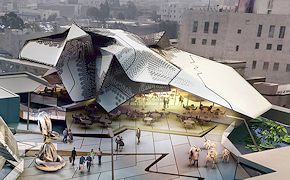
I like the notion of extravagantly exploiting the existing roof-scape. Makes me wonder if that's where urban design should start putting more of its focus--designing a new layer on top of the existing layer. Installation by cargo helicopter all over the place.
2015.03.20 20:36
Duplitecture and the Downfall of Rep. Aaron Schock
Regarding Original Copies: Architectural Mimicry in Contemporary China, perhaps google search 'reenactionary architecturism'
2015.03.22 18:25
Pondering the cultural value of Frank Gehry's Winton Guest House
I suspect the Morandi connection is more of a mask. The clear precedents for what Gehry did with the Guest House are Kahn's Dominican Motherhouse for the Sisters of St. Catherine de Ricci (1965-68) and Stirling and Wilford's Berlin Science Center (1979). Even my own Cooper & Pratt House (1982) may predate (or was being designed at exactly the same time as) the Winton Guest House (1982-87).
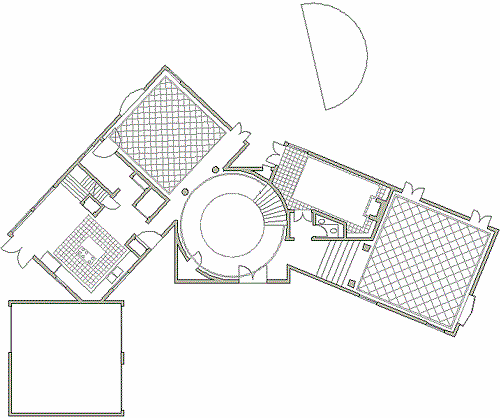
|